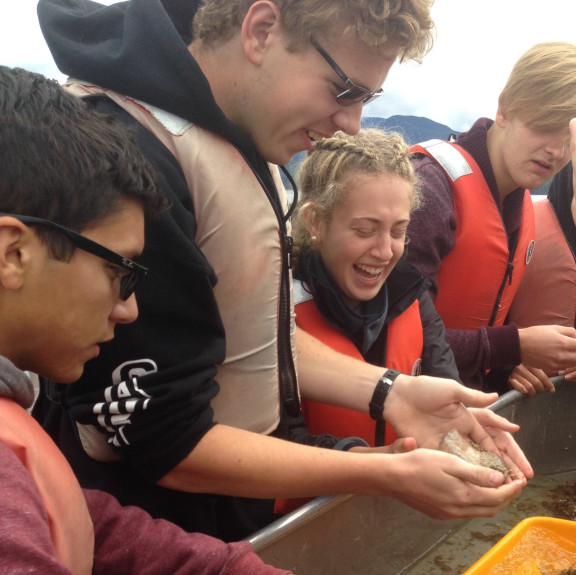50p

Biology in Bamfield
Bridges provided a short respite before the bus bumped back onto a rocky, dusty logging road. After two hours on dirt, it was hard to believe that we were headed to a major research station run by five universities, which welcomes hundreds of university students, high school students, and the public annually.
Each year, the AP Biology 12 class, taught by Mr McCarthy, travels to the Bamfield Marine Sciences Centre for a three-day marine biology exploration. This year, the Environmental Science class (also taught by Mr McCarthy) went as well.
As soon as we arrived, the instructors fertilized sand dollar eggs; we watched the process on the television screen that was hooked up to the microscope. These babies were checked on frequently throughout our visit to Bamfield, and we watched them develop from the very beginning. Unfortunately, we were not able to observe the entire process, as they were just entering the gastrula stage (when the digestive tract is developed) when we left.
A trip to the beach that afternoon began a series of lessons, explorations, and labs involving marine invertebrates. We learned about the ways that invertebrates reproduce, their evolutionary path, and their classification.
To accompany our studies, there was a “design your own experiment” activity wherein each group of six students developed a hypothesis and planned and executed an experiment. Of course, as animal care is hugely important to the researchers at Bamfield, our plans had to be humane and approved before we carried out any tests. Once the experiments were complete, each group presented its findings: explorations such as the effect of warmer or cooler water on hermit crabs’ emergence times, sea cucumbers’ body shapes, sea stars’ speed, and whether tubeworms spend more time out of their tubes in the presence of plankton.
Spending some time on marine plants, as well, we completed a lab comparing the photosynthesis and respiration rates of different colours of seaweed in light and dark conditions. All six groups’ results were then combined to produce a class outcome and conclusion.
The adage “saving the best for last” came into play on our last morning in Bamfield: we had the opportunity to go out on the water to see some marine animals in their habitats, record oceanography data, and collect plankton. With regular inspections to make sure they are using it sustainably, BMSC has a dredge site a short boat ride from the centre where they took us to see, touch, and learn about some more sea creatures. Each group’s dredge brought up the unique and interesting, but one of the best finds was a baby octopus that swam out of the shell it was hiding in. A cow and calf pair of humpback whales was also spotted, and they lent their flukes to excellent photo opportunities.
That morning, we also explored the life under the docks by pulling up ropes that had years’ worth of invertebrates and algae growing on them, took readings of the ocean temperature and salinity, and gathered samples of seawater. The final activity at Bamfield was to look at the water under microscopes. Despite looking to the naked eye like just plain water, a wealth of life – phytoplankton, zooplankton, larvae, and more – was revealed when it was magnified.
Thank you very much to Mr McCarthy for making this trip happen every year, Ms Hampshire and Mr McGuigan for accompanying us, and everyone at BMSC for a great trip!
Hannah R, Mackenzie ’18